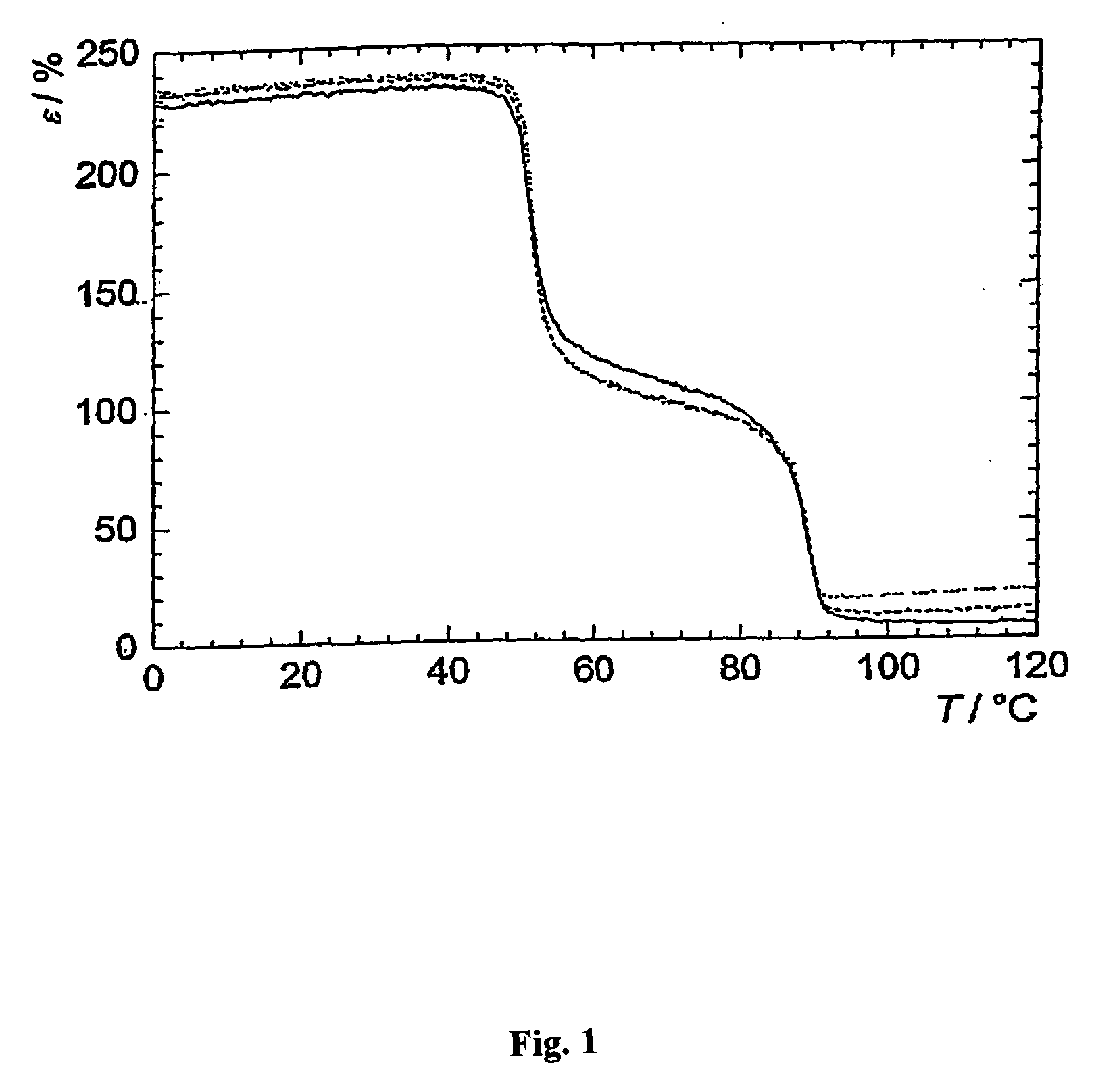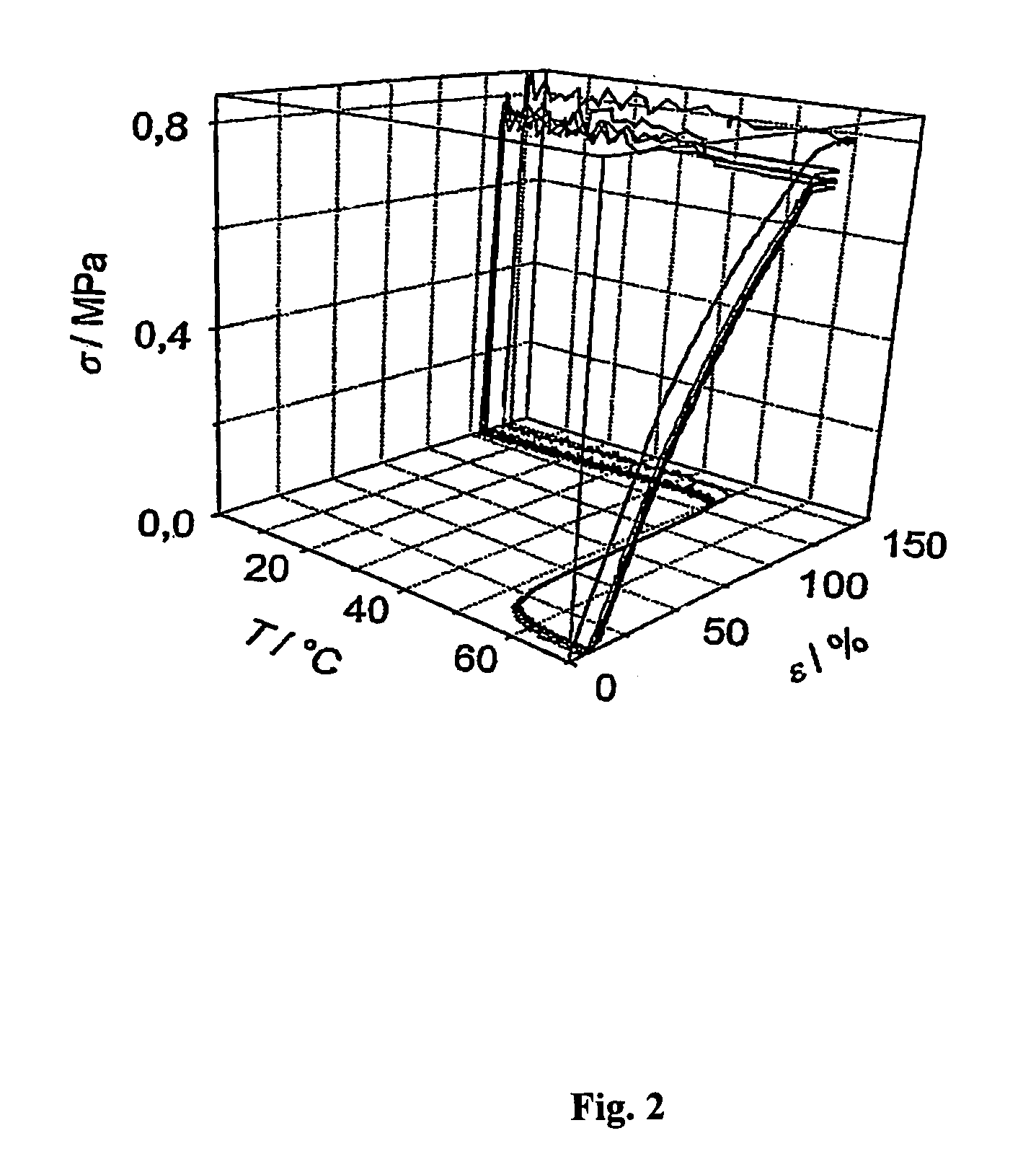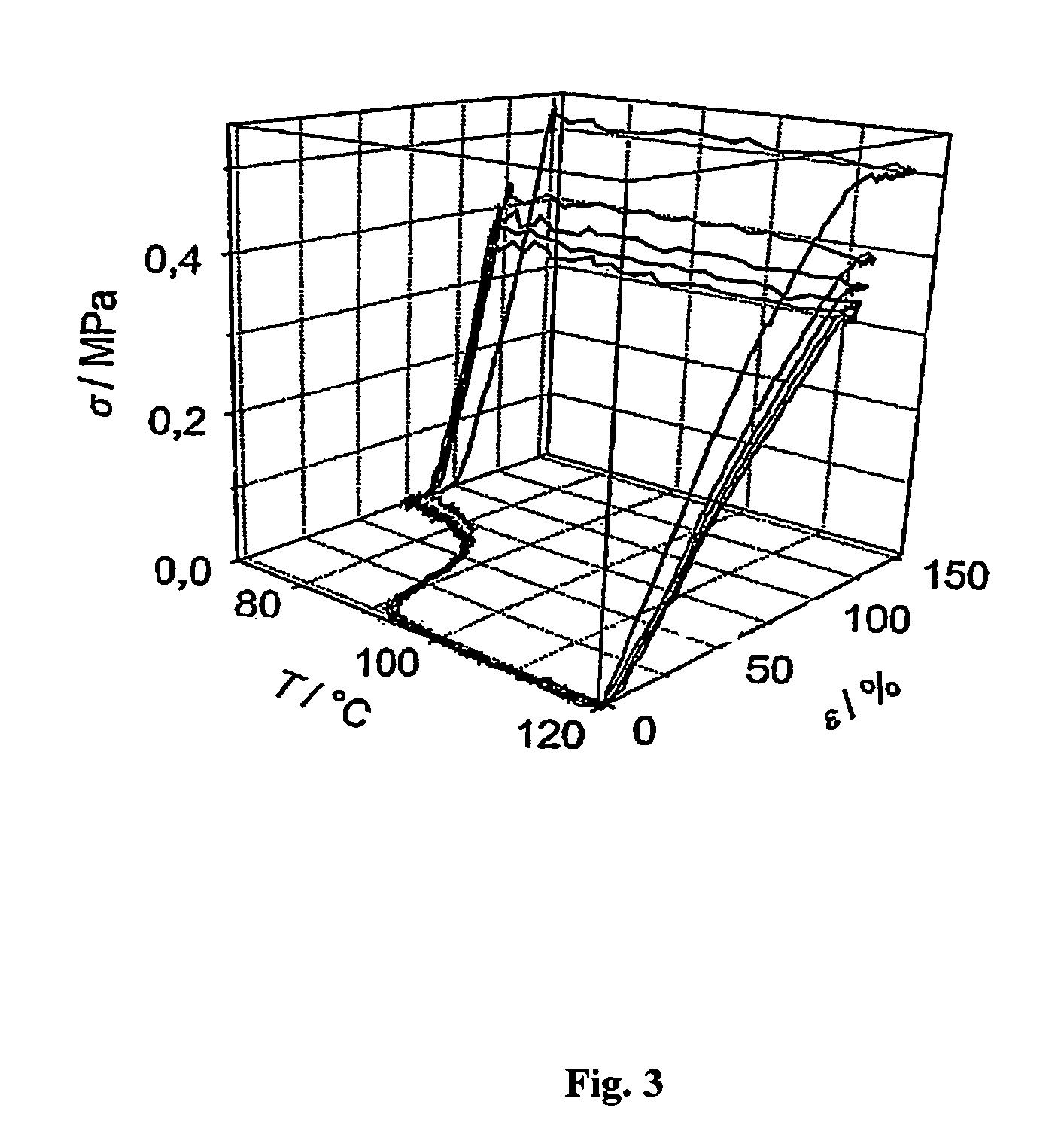Interpenetrating networks
a technology of interpenetrating networks and tunnels, applied in the field of tunnels, can solve the problems of loss of desired physical properties, no longer sufficient materials such as metals, ceramics and wood, and no exact recovery of initial shap
- Summary
- Abstract
- Description
- Claims
- Application Information
AI Technical Summary
Problems solved by technology
Method used
Image
Examples
examples
[0055]The following examples further illustrate the present invention.
Preparation of Interpenetrating Networks
[0056]Networks are obtained by irradiating molten mixtures with UV light having a wavelength of 308 nm. The mixtures comprised a dimethacrylate polycaprolactone (DMPC) (Mn=10,000 g / mol), obtained by ring opening polycondensation of caprolactone and subsequent conversion of the terminal groups, so that both terminals were provided with methacrylate groups. Additionally the mixtures in each case did comprise a polyester urethane (PU) of different nature (i.e. showing a differing content of pentadecalactone (PDL)), as described in the following Table. Mixtures were obtained by dissolving the respective components in chloroform in order to prepare a solution having a concentration of 10 wt %. Subsequently these solutions were transferred drop wise into a fraction of hexanes, in order to precipitate the starting materials in the desired mixture. Mixtures were dried at 35° C. unti...
PUM
| Property | Measurement | Unit |
|---|---|---|
| Temperature | aaaaa | aaaaa |
| Temperature | aaaaa | aaaaa |
| Temperature | aaaaa | aaaaa |
Abstract
Description
Claims
Application Information
 Login to View More
Login to View More - R&D
- Intellectual Property
- Life Sciences
- Materials
- Tech Scout
- Unparalleled Data Quality
- Higher Quality Content
- 60% Fewer Hallucinations
Browse by: Latest US Patents, China's latest patents, Technical Efficacy Thesaurus, Application Domain, Technology Topic, Popular Technical Reports.
© 2025 PatSnap. All rights reserved.Legal|Privacy policy|Modern Slavery Act Transparency Statement|Sitemap|About US| Contact US: help@patsnap.com



